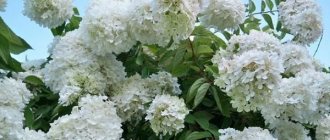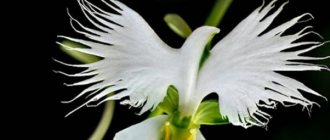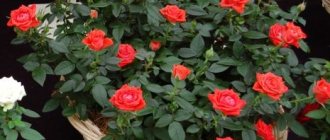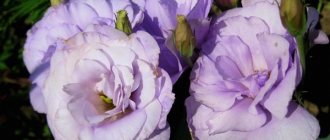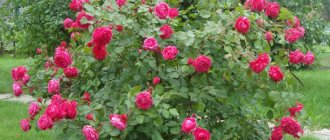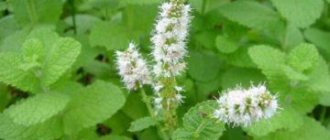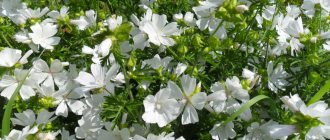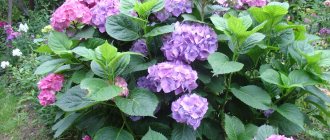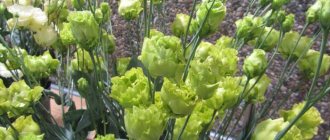Description of Asters perennial
Aster is a plant loved by many gardeners. The shoots of the herbaceous perennial are erect with dense foliage. The height of the stem ranges from 30 cm to 2 m. The leaves are bright green. They are small, lanceolate-shaped. The inflorescence is a small basket. In appearance they are very similar to small bright stars. They come in different shades:
- white;
- blue;
- purple;
- pink;
- raspberry.
Astra perennial
Advantages and disadvantages
Among the main advantages of culture are:
- highly decorative and attractive appearance;
- availability of reproduction at home;
- frost resistance;
- ease of care;
- relative resistance to various diseases and pest attacks;
- good compatibility in group installations.
Among the disadvantages, some summer residents cite the need to form and direct the growth of the crown.
Description of the types of perennial varieties of Asters
Evening primrose perennial (flower): planting and care
There are a huge number of garden perennial asters known.
Bush
This rather compact bush grows 60 cm. The seed ripening period is October. Bush aster is frost-resistant. However, after a few years, when a small hummock of new shoots forms above the ground, perennial bush asters may freeze out in winter.
short
The shrub does not exceed 40 cm. The tops of the low-growing perennial aster are decorated with many small stars. They are most often up to 3-3.5 cm in diameter. The flowering period is September. Against the backdrop of fading greenery, such a bright low flowerbed looks impressive in summer.
Bush aster
Autumn
Flowering period is September-October. In Russia, autumn asters are often called September asters. However, in some cold years, even the most careful owners may not see the plant’s flowers. The height of the autumn perennial aster can reach both 30 cm and 1 m.
Winter
This is the most persistent species of perennial asters. The inflorescences survive until the first snow. They are also called oktyabrinkas. Winter asters have the same problem as autumn asters - sometimes they do not have time to open their buds.
Globular
This species earned its name due to the ideal shape of the bush. The average height of a spherical aster is 50 cm. The flowers are small, but there are many of them, which creates the illusion of a ball during the flowering period.
Ball-shaped aster
Alpine
This type of flower is frost-resistant. After planting, the first flowering can be observed the following year from late May to mid-June. This is a low-growing variety of aster. The height does not exceed 25 cm, and the blossoming bud grows to 6-8 cm.
Austrian
This species reaches a height of 80 to 1.5 m. The flowering period of the Austrian beauty is September. They are frost-resistant. The flowers look like daisies, 6 cm in diameter.
Italian
Bushes of the Italian perennial aster are spherical in shape. They grow 60 cm. The flowering period of this species is mid-summer, namely July August. A small bush becomes strewn with flowers similar to daisies. The only difference is the dark purple color. They gather into dense sockets. The diameter of each flower does not exceed 5 cm. Among the Italian asters there are many varieties. At the same time, I would like to pay special attention to Bessarabian. This is the largest representative of this species. Its height reaches 75-80 cm. The color of the petals is bright lilac and soft pink. The core is brown.
Important ! Italian aster seeds ripen by early September.
English
This species is distinguished by dense and bright flowering. The inflorescences are blue, marsala, salmon, white, lilac, blue, pink. English asters reach a height of up to 2 meters. Therefore, this species is loved by gardeners for the opportunity to decorate the base of garden trees with small flowers with a diameter of 3 cm.
Other
The golden aster will delight you in the last month of summer with its bright flowers in the shape of cones. On long and strong shoots, from 10 to 20 buds develop.
Sideflower deserves special attention. Its shoots develop in the form of a vine. They are often white with a slight hint of pink. Towards the end of the flowering period they turn bright purple.
The American aster will delight the owner with abundant flowering that lasts all summer.
Floral variety
Asters are unique flowers, because there are so many of them - tall, low-growing, perennial, annual. In turn, the latter are divided into three main classes, which were formed according to decorativeness and structure - reed, tubular, transitional. These three classes are further divided into 10 according to the type of flower and its shape. Each group has its own varieties that can surprise the most fastidious gardeners; look at the photo - this is a pompom aster. The charm of these balls is amazing, and they can also have different shades, but these are the same year. Today we are talking about perennial species, and we will consider them further.
Most popular varieties
Aster dumosus starlight
Shrub aster Starlight is a low, compact plant. Its inflorescences grow up to 4 cm in diameter and are bright pink. An adult perennial shrub aster resembles a ball about 40 cm high. Flowering is abundant and lasts from September until the first frost.
Aster dumosus kristina
Aster dumosus kristina is cushion-shaped, white with a bright yellow core. An adult flower grows 30-40 cm. It blooms in August-September.
Other
New Belgian: Bitchwood Rivell (purple), Dick Baylard (pink), Saturn (sky blue), Amethyst (lilac), Oktoberfest (terry blue aster).
English: Lillith Fardel (pink aster), Doctor Eckerner (red-violet), Braumen (lilac), Rothe Stern (burgundy).
Alpine asters: Dunkle Sean, Alba, Ruper, Gloria. Dwarf varieties harmoniously decorate border areas and small flower beds.
What plants are combined with?
- The bush aster is placed in the flowerbed next to other representatives of the large Asteraceae family, which require similar care. The proximity to garden flowers and buds until late autumn has a beneficial effect on the development of the herbaceous plant, including:
- marigold;
- petunias;
- chrysanthemums;
- dahlias;
- phlox.
When designing floral compositions, the bush aster is combined with thuja, juniper, dwarf spruce, and cypress. To prevent conifers from taking moisture from the flower, plants are placed at a distance from each other, and not close.
How perennial Asters reproduce
These flowers are rarely propagated by seeds.
Important ! The problem is that they quickly lose their germination properties. For this flower it is preferable to use vegetative methods
Dividing the bush
To propagate using this method, it is recommended to wait until the flower grows 3-5 cm from the ground. Next, the bush is divided into small parts with 2-3 buds and planted. The very next year, the divisions form a full-fledged plant. It is better to divide every 3-4 years. This helps rejuvenate the root system and also prevents the development of fungus.
Dividing the bush
Cuttings
For propagation using this method, you can use either the top or the whole stem. For rooting, it is recommended to select areas with loose soil in a shady area. The cuttings are rooted into the ground and covered with film. There are no strict time limits. The procedure can be carried out throughout the summer.
Cuttings
Advantages of the seed method
There are several ways to propagate alpine aster. The most accessible and simplest is seed. Usually it does not require the use of additional equipment and materials. Everything you need is available in the household.
By propagating plants by seeds, you can get a large number of seedlings. With proper care, they will all be fully developed.
Features of home care
Aster is an outdoor plant. However, its seedlings can also be found in the homes of experienced gardeners. To grow a strong and healthy plant, you must follow the basic recommendations.
Temperature
For active growth and development of seedlings, it is recommended to maintain a temperature of 15-16 degrees. As 3-4 leaves appear on the first shoots, the temperature can be reduced to 12-15 degrees.
Important ! To make flowers feel as comfortable as possible after transplanting them outside, it is recommended to reduce the room temperature at night. This will allow the seedlings to adapt to new open-air conditions as quickly as possible.
Lighting
Astra loves to bask in the warm rays of the sun. It is recommended to place the seedlings on a windowsill on the sunny side. If this is not possible, it is recommended to install lamps nearby. Many gardeners place containers of seedlings in the greenhouse for a period of time. This allows them to spend extra time in the sun, and it is also useful for hardening off the sprouts.
Watering
Watering should be plentiful, but at the same time rare. After each moistening of the soil, it is recommended to carefully loosen it. This will avoid waterlogging of the soil. The soil should not be allowed to dry out.
Spraying
Spraying is an integral step for growing healthy flowers. During the first week after the first sprouts appear, the soil is moistened with a spray bottle once a day. The second week - once every two days. In the third week, you can begin full watering 2-3 times a week, gradually reducing the frequency, but increasing the volume of liquid.
Humidity
The recommended air humidity in the room where asters grow should not fall below 65%. The maximum value is 80%.
Priming
Aster is a flower that prefers fresh soil. This is due to the fact that old soil may contain sources of various diseases and pests. The ideal mixture for a flower: sand, turf, decomposed peat. The components are mixed in a ratio of 1:3:1. It is necessary to exclude all large lumps from the soil.
Important ! For seedlings, ordinary river sand is suitable, but if you can’t get it, you can use coarse-grained sand, having previously calcined it.
Feeding
To grow strong flowers indoors, you need to think about feeding. It is recommended to carry out the first fertilizing 2 weeks after planting the seeds. It is during this period that the root system actively develops. For the first time, it is recommended to mix potash and phosphate fertilizers, and the proportion should be 2 times less than specified in the instructions. Fertilizer must be applied directly to the soil. If it gets on tender young leaves, burns may occur.
Diseases and pests
Diseases and pests love flowers no less than vegetables . They destroy the leaves of the plant, the pagons, the root system, and can spoil the buds, so you need to make sure that they are not in the flowerbed.
Perennial asters most often suffer from fusarium and powdery mildew.
Powdery mildew , which appears as a white coating on leaves and stems, can destroy a plant within a few years if it is not addressed. For prevention, a simple soap solution is used, and to combat the disease, any specialized chemicals that contain a lot of sulfur are used.
There is no cure for fusarium . Unfortunately, plants affected by it have to be completely dug up and burned so that the disease does not spread to other crops. The first symptoms of the disease are yellow leaves, thinning of the stem, and rotting of the roots.
Traditional recipes for diseases and pests should be used only for prevention or in the early stages , when the problem has just appeared.
Of the pests asters are most fond of, they are spider mites and leaf nematodes . When a spider mite appears, a thin web entwines the plant, and black and white dots appear on the back of the leaf. In the case of a nematode, brown spots form on the leaves, they become thin, and may bend, dry out or rot. To combat them, it is worth buying a good insecticide of systemic or contact action.
When and how does it bloom
Today, botanists know a huge number of species, varieties and hybrids of this unusually beautiful flower.
Types of flowers
The Aster family includes a huge number of flower species. Selecting a plant that is suitable for a specific installation or flower bed will not be a problem. Today there are several main and most popular types:
- ostrich feather;
- Duchess;
- bouquet;
- Victoria.
Flower shapes
According to their shape, asters are divided into several groups.
To size:
- small - up to 3.5-4 cm;
- medium - from 4 to 8 cm;
- large - from 8 cm.
Inflorescence shapes
According to the shape of the inflorescence:
- flat;
- rounded flat;
- hemispherical;
- spherical;
- semi-double;
- terry.
Flowering period
Asters are usually divided into 3 flowering periods. The first ones are spring. They bloom from May to June. Next comes the turn of summer. They bloom from June to August. This is perhaps the longest group of flowers. Autumn ones are pleasing from the end of August until the first snow.
Changes in care during the flowering period
During the birth of buds, the aster is fed a second time. For this, prepare 50 g. mixtures of phosphate and potassium for every 1 m2 of land. Just before flowering begins, the aster is fed a third time. The composition of the fertilizer remains the same. When the flowers have bloomed, it is recommended to reduce watering slightly. Asters are very sensitive to excess moisture, but do not overdry the soil. It is recommended to develop the frequency of watering yourself, based on the time for complete drying of the soil near the root system.
Important ! If the summer is dry, then watering should be plentiful. Otherwise, the flowers will be sparse and small.
Transplantation after purchase and during reproduction
It is recommended to transplant seedlings into open ground in early May. It is recommended to loosen the soil after each watering or rain. This helps to ventilate the root system and protects against rotting.
If the time for planting seedlings is missed, then you can resort to the cutting method, which can be carried out throughout the summer.
Agrotechnical work and recommendations
Globular asters are unpretentious, but for long flowering these plants need to be provided with proper care, following simple rules of agricultural technology.
Good to know: 7 of the best perennial flowers that are not afraid of drought
Deadlines
Sowing seeds of varieties with late flowering periods should be carried out in the spring, with early ones - in the fall. It is recommended to plant cuttings or divide the bush in May-June.
Related article:
Perennial phlox blooming
Selection of planting material
Seed collection should be carried out no earlier than 40-60 days after the buds begin to bloom. Unripe material is characterized by low germination.
Seedlings grown in individual forms or immediately in open ground are suitable for planting.
For rooting cuttings, it is worth selecting healthy large sections without signs of damage or disease. When replanting separated parts of a bush, it is necessary to pay attention to the condition of the root system and the presence of young shoots.
Place
For planting, you should choose a bright, warm place without shade from tall trees or building walls and fences.
It is important to take into account the crops that previously grew on the site. The best option is calendula and marigolds. It is better to avoid planting after tomatoes, potatoes, gladioli and tulips
The soil
The plant requires light, fertile soil that has good breathability. Acidic soil with stagnant water and constant moisture is not suitable.
When growing seedlings at home, you can use purchased substrates from the assortment of gardening and gardening stores or prepare your own soil mixture. To do this, you need to take clean river sand and turf soil in equal parts, add a little vermiculite, and mix well.
Do not use humus and compost. Immediately before planting, the soil should be watered with a solution of potassium permanganate or the drug Fitosporin-M.
Reproduction
There are several ways to propagate perennial asters:
- Layerings. In the spring, before the buds swell, trim the bush to a height of 15-20 cm. Tilt and secure the young shoot in the soil with a wire or clamp. Throughout the season, it is necessary to remove weeds and water the stem in a timely manner. The plant needs to be separated in the fall.
- Seeds. Autumn or spring planting (sowing) of seeds in open ground is carried out. Growing seedlings in containers in winter is also used. Most often, this method is used for annual crops.
- Cuttings. Healthy sections of young shoots without drying out or damaged areas are subject to rooting.
- Division. Dig up the selected bush, divide it into parts with a sharp tool (disinfect it in advance). Each of them should have several strong stems and roots. Plant the resulting seedlings.
Related article:
Osmanthus plant: photos, types, cultivation, planting and care in open ground
Landing
First dig up the area for flowers, level it with a rake and remove roots and debris.
Afterwards you need to prepare the grooves and water them with water. When sowing seeds in open ground in autumn or spring, they should be buried 0.5 cm into the soil. The first shoots germinate in April when stable warm weather sets in. To achieve earlier appearance of seedlings, during spring planting, seed germination is often used in damp cotton pads or cloth.
Caring for seedlings consists of shallow loosening of the soil, removing weeds, periodic watering and adding a complex of mineral components (several fertilizing throughout the warm season).
With the arrival of autumn, the grown plants must be transplanted to a permanent place of growth.
Sowing seedlings in containers or boxes should be done in March or early April, depending on the region. Fill the containers with substrate, distribute the seeds along the furrow (pre-germinate) to a depth of 0.5 cm.
Spray warm water from a spray bottle and cover with polyethylene, glass or a plastic lid. Place in a warm, illuminated place (not on the windowsill). When germinating seeds in the room, it is necessary to maintain the temperature at +18…+20 °C..
The first shoots appear on days 5-7, after which the protective layer can be removed. During this period, it is important to monitor the humidity level in the containers. If necessary, the soil should be sprayed with water. It is also necessary to observe the optimal temperature regime: at night the room should be +17 °C, during the day – approximately +20 °C. The boxes can be moved to the windowsill.
The formation of three true leaves on the seedlings indicates the seedlings are ready to be planted into cassettes or individual forms. After 10-12 days, you need to fertilize with ammonium nitrate, after 14 days - with potassium sulfate, ammonium nitrate and superphosphate.
Dilute all fertilizers in water according to the manufacturer’s instructions, without exceeding the recommended consumption rates of the drug.
If there are 5-7 leaves and the height reaches 7 cm, the seedlings are ready to be transplanted into the ground to a permanent place. 14 days before work, seedlings need to begin to be hardened off - take the forms out onto the balcony or open a window.
Related article:
How to care for purchased flowers so they stay fresh longer
It is recommended to plant in the morning or in cool, cloudy weather. At first, the plant needs protection from the scorching sun - the construction of shading structures from scrap materials.
Make holes in the prepared area of the garden, pour a glass of wood ash into the bottom of each hole, and water. When planting, you should maintain a distance between bushes of 30, 50 and 80 cm, respectively, for small, medium and large varieties of asters.
Due to its significant growth, the bush needs to be divided and transplanted to a new place upon reaching the age of 5-6 years.
Watering and care
Watering is carried out as needed, but the leaves must be protected from contact with water.
Periodic loosening of the soil and removal of weeds must be carried out after watering and absorption of water into the soil.
Video: Caring for perennial aster in autumn
Top dressing
The first application of mineral fertilizers after planting is carried out 14 days later, the second - during the formation of buds.
Cold resistance and preparation for winter
Flowers are considered a frost-resistant plant that does not require additional protection work during the cold season. However, many summer residents at the end of the season, before the onset of cold weather, completely cut off the shoots at the root and cover the ground part with them. If you do not do this procedure yourself, frost will break the bases of the stems and fallen shoots will serve as protection from low temperatures and delay snow cover.
In areas with frosty winters without snow, it is practiced to cover the bushes in the first years of life with coniferous branches or mulch with peat and straw.
Related article:
Smolevka plant: photos, types, cultivation, planting and garden care
Trimming
Globular asters are able to grow on their own, without the intervention of a gardener, but in some cases they still require pruning and crown formation. Damaged, dry or shoots with traces of infection must be removed. To achieve the desired look, it is necessary to cut off branches that grow incorrectly or protrude excessively beyond the crown of the bush.
After flowering is completed, it is recommended to remove drying inflorescences. This will allow the plant to direct all its energy to the formation of new buds.
Diseases and pests
Errors in care and rainy weather can lead to the spread of powdery mildew or gray rot on the bush. Infected shoots must be cut off and disposed of (burned). To combat such diseases, it is worth using fungicides, for example, Topaz, Fitosporin, Gamair.
The main pest of the plant - aphids - can cause irreparable harm to the growth of the bush, even to the point of drying out and its complete death. To eliminate the insect, it is advisable to use insecticides.
As a preventive measure in the fall, after cutting the above-ground part of the plant, it is recommended to spray it with Bordeaux mixture, copper sulfate or Zircon.
Application in landscape design
Perennial asters are widely used in landscape design and park areas. The plant is considered popular due to its high decorative value and ability to be combined in an original way with many other options.
The following planting options for spherical aster look especially beautiful:
- in rock gardens and rocky hills;
- in group compositions;
- as the outline of borders and flower beds;
- in rockeries;
- solo (solitary) plantings;
- in flower hedges of a given shape.
Possible problems in growing
An attentive gardener immediately sees external changes in his favorite flower.
Problems with leaves
If the leaves begin to turn yellow, become brown, curl and dry out, this indicates improper care or the development of a disease.
First of all, you need to make sure that the flower is not overdried. You can try changing the soil moisture regime. If black longitudinal stripes are added to the listed factors, this indicates the development of fusarium. This disease appears if the soil is overly moistened and there is stagnation of water in the root system. In this case, it is impossible to save the plant.
The appearance of lumpy spots also indicates the development of late blight. To overcome the disease, it is necessary to cut off all affected areas and sprinkle with activated carbon.
Pests
Aphids, thrips and cicadas are the main pests of asters. They suck the sap from the plant and are carriers of diseases. To prevent the appearance and reproduction of insects, it is necessary to treat the flowers with Fitoverm solution or other insecticides.
The earwig is capable of gnawing not only the leaves of the flower, but also the stems and buds. To drive away the insect, it is necessary to regularly remove weeds and loosen the soil.
Important ! When the first signs of spider mites are detected, it is recommended to treat the leaves and stems of the plant with a soap solution.
Diseases
Mosaic disease appears as yellow streaks on the leaves. After this, chlorosis develops and the plant stops developing. To overcome this disease, it is recommended to treat the bush with Actelik or Peritrum.
Aster rust is a fungus whose natural habitat is the needles of pine trees. The disease is characterized by the appearance of swellings on the lower part of the leaves. They are filled with rusty spores. For treatment, use a 1% solution of Bordeaux liquid. Treatment is carried out after 10 days. If the disease is detected late, the bush is almost impossible to save.
Signs of improper care
Aster, although an unpretentious plant, will immediately tell its owner about improper care. First of all, the leaves of the plant signal this. They may wilt or change color. If measures are not taken on time, improper care will affect flowering. The inflorescences will be sparse and pale. In addition, the plant will have few flowers.
Aster
Many different types of asters have been bred. Before purchasing a particular variety, it is recommended that you read the description of the flower in more detail. General principles and rules may sometimes not be suitable for individual hybrids. If the flower bed is constantly renewed, then it is recommended to pay attention to annual varieties.
Queen of the autumn garden - aster
Just imagine that there are currently more than 600 species of asters. They include a huge variety of varieties that amaze even the most fastidious landscape designer with their beauty. Asters are unusual in that their inflorescences are all different; bushes can often be confused with chrysanthemums and peonies, but there is another unique feature - shades, among which there is a variety of blue. This is quite rare among flowers of all species.
Asters are unpretentious, beautiful, accessible to everyone, and can be grown both with and without seedlings in all regions of our large country. What else is needed? Yes, but it’s just a little better to understand the varieties, because it’s difficult for a beginner not to get confused in such an assortment. We will help you with this, of course, we cannot describe all 600 species, but we will tell you about those varieties that gardeners most often plant - the best and most beautiful. And as you can understand, today we will talk mainly about perennial asters.
How to choose neighbors?
Tall varieties can form an intermediate tier in a flower bed or grow against the background of other perennials. Since New England and New Belgium species tend to drop their lower leaves, it is good to fill the space below with other plants:
- Japanese anemones;
- late varieties of phlox;
- Echinacea purpurea;
- golden dahlias;
- marigold;
- perennial ornamental grasses.
Low varieties look interesting next to plants with silver leaves, for example:
- cat mint;
- absinthe;
- splinters.
Low-growing varieties for the garden and flowerpots
We have already mentioned that there are many asters - more than 600 varieties. If you decide to decorate your garden with these flowers for the first time, we first advise you to get to know the plants better. After all, you need to know how tall the flowers will be, when they bloom, whether they need to be dug up in the fall, and what species prefer. This is the only way to get a luxurious garden and not waste time and effort. Of course, you must first choose a good variety. And among dwarf asters we can recommend the following.
Varietal characteristics of cultivation
- Position. All types of aster require sunny and fresh places. Lush New England, New Belgium and Shrub species require permeable, fertile and moist soils. They should be fertilized and watered throughout the season to keep them looking healthy and blooming profusely. In dry, poor soil, the lower leaves quickly fall off.
- Soils. Other species can be planted on weaker soils. This is especially true for narrow-leaved species such as aster angustifolia, heather and freecarta. They prefer a permeable and drier substrate.
- Frost resistance. All types, with the exception of Freakart Astra, are completely frost-resistant. Alpine and Tongolian asters growing in rock gardens should be covered with coniferous branches for the winter.
- Reproduction. Asters reproduce by dividing the bush in April-May. Bush and new Belgian varieties grow faster. In order for plants to grow lushly and abundantly, they need to be separated every 2-3 years. Less commonly, New England varieties can be separated.
- Garter. Tall New England and New Belgium varieties require staking.
- Diseases. New Belgian and bush asters are sensitive to powdery mildew. To reduce the risk of infection, provide good air circulation between individual bushes by planting plants far enough apart (at least the width of the bush so they can easily pass between bushes). Plants that grow too densely need to be provided with access to the sun by removing some of the shoots.
Briefly about cultivation and care
Most asters are perennial, although there are exceptions, such as the annual Chinese star.
- Winter hardiness. Almost all types of aster are frost-resistant, but in the winter, for example, alpine asters should be covered with coniferous branches so that the bush does not freeze.
- Rejuvenation. Perennial varieties, unfortunately, die every few years. When we notice extensive drying out of the central part of a cluster of flowers, this is a sign that the aster is being removed. Therefore, it is important not to forget about rejuvenating the bushes. The plant must be dug up, the young parts separated and planted in another place. If flowers are planted on weak soils, rejuvenation should be carried out every 2-3 years.
- Reproduction. Asters can be propagated in April or May. The plant is dug up, divided into several parts and planted.
- Aster diseases. Although the plant is not demanding, it is sometimes affected by diseases:
- powdery mildew is a fungal disease; white powdery scales appear on young leaves and shoots;
- leaf spotting - watery, round or oval brown spots appear, diseased leaves die;
- gray rot - caused by the fungus Botrytis cinerea, appears in spring or autumn, watery, brown and fast-growing spots are visible on above-ground parts of the plant, parts of plants or whole plants die.
This is a brief information about the growth of asters; you can read more in detail in the article on caring for asters.
Planting a plant
Before planting the plant in open ground, you need to choose a suitable location: all perennial asters love a well-lit sunny place. Before planting asters, it is recommended to fertilize the soil (phosphate preparations are used), dig it up, pick out all the weeds and moisten it.
Aster does not need any special care, just watering, loosening and a well-chosen place for planting
It is advisable to add about 200 g of lime (can be replaced with dolomite flour) and about 100 g of superphosphate to the soil before digging the soil and planting the aster. You should dig to a depth of 30 cm.
Attention! Damp, flooded soils are absolutely not suitable for planting asters. Under such conditions, the plant becomes infected with powdery mildew and simply dies.
